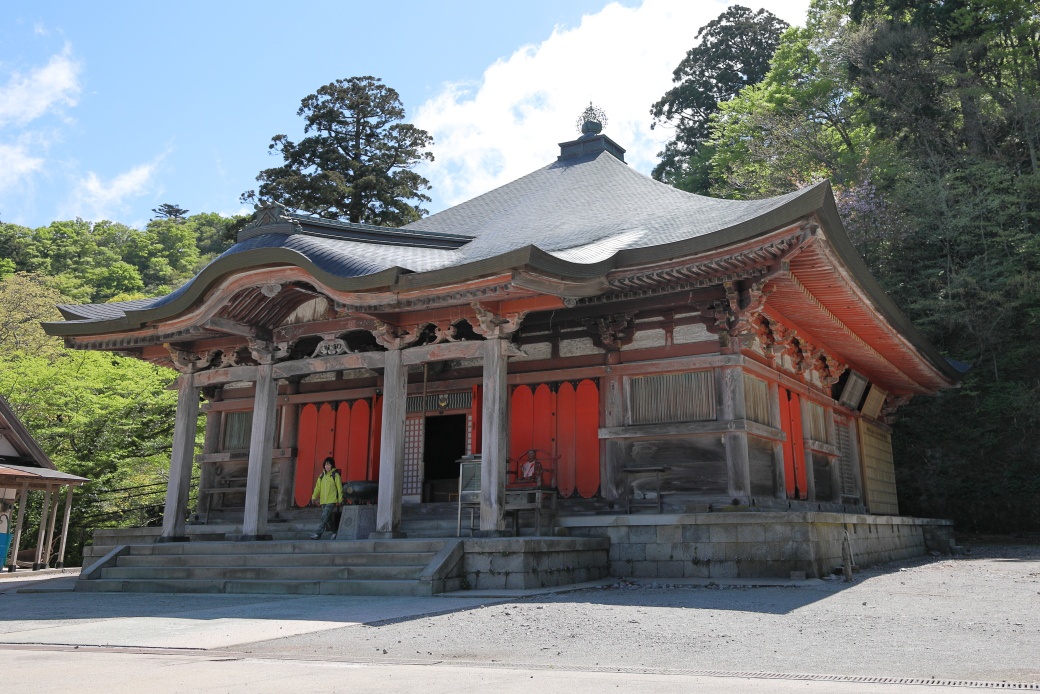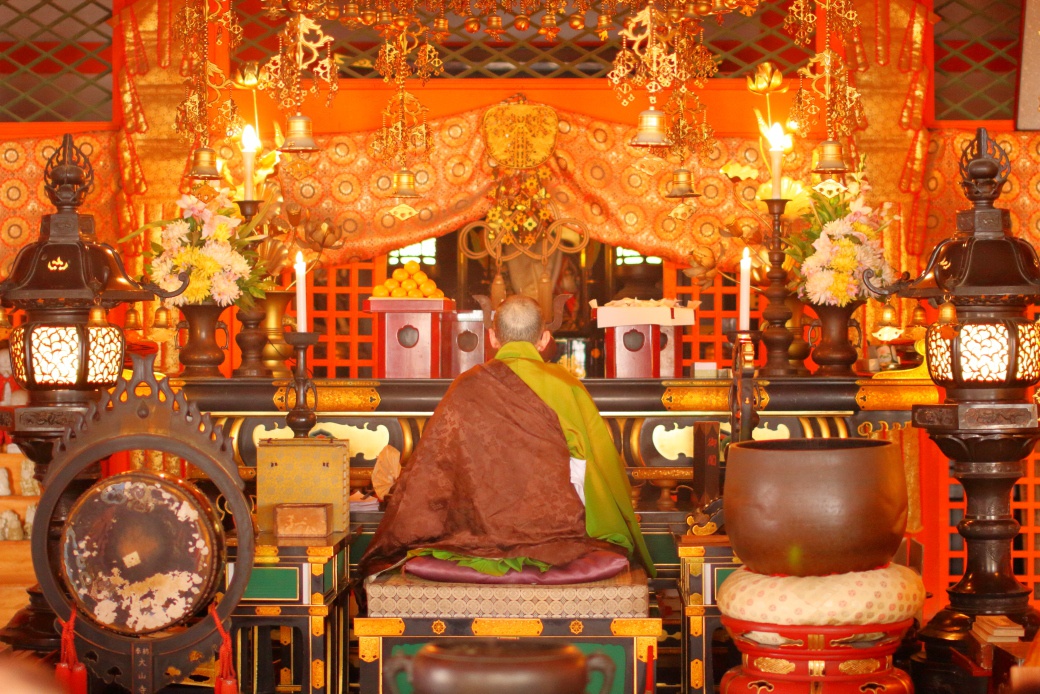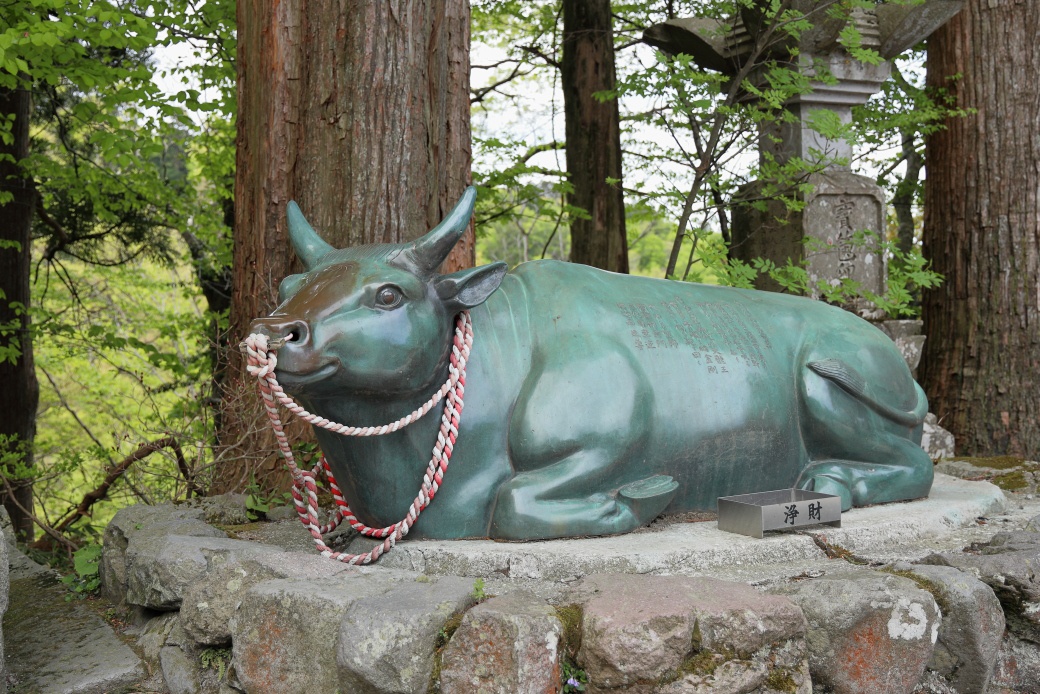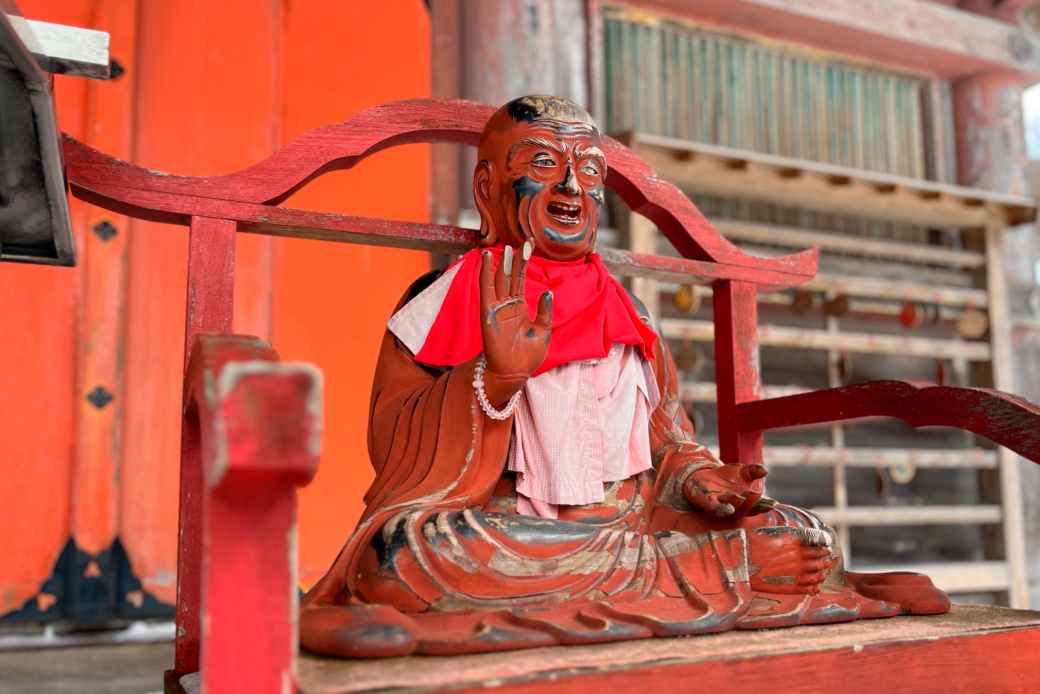

Daisenji Temple
Beginnings of Daisenji

Mt. Daisen has long been a sanctuary inhabited by kami. At some point, Buddhism was introduced to the mountain, and the belief in Jizo Bodhisattva took root. It is said that Kinren Shounin founded Daisenji in 718 as follows:
“There was a hunter called Yorimichi. One day, he found a golden wolf coming out of the sea so he started chasing it. Before he knew it, he had reached Mt. Daisen and finally approached the wolf. When he was about to shoot an arrow at it, suddenly Jizo Bodhisattva appeared. As he lowered the bow, Jizo Bodhisattva disappeared and the wolf turned into an aged priestess. She urged him to worship Jizo and practice together with her. Later, he became a monk called Kinren Shounin and founded Daisenji”
Daisenji Consisted of Three Temple Areas

Many small temples were clustered in Daisen and belonged to one of the three areas: Chumonin, Nankouin, and Saimyouin. Each of the three areas had its own unique beliefs: Chumonin was devoted to Dainichi Nyorai and Reizou-Gongen (the manifestation of Kannon Bodhisattva); Nankouin was devoted to Shakamuni Buddha and Kongou-Douji (the manifestation of Yakushi Nyorai); and Saimyouin was devoted to Amida Nyorai and Riju-Gongen (the manifestation of Monju Bodhisattva). Despite repeated disputes, they united as “Daisenji” by the early 13th Century, having agreed on the faith in the Daichimyou-Gongen (the manifestation of Jizo Bodhisattva) as supreme.
The Development and Decline of Daisenji

Daisenji expanded its territory as Jizo worship became popular, which finally grew into a major force around Chugoku Region. It is said that there used to be 3000 warrior monks in Daisenji. A dagger and parts of armor have been excavated. However, it lost most of its territory due to the survey conducted by the new government at the beginning of Edo Period (1603-1867). Then, a monk Gouen had kept pleading until the government entrusted Daisenji with one of the vastest lands in Japan to administer. In the end, Daisenji developed into the biggest temple organization in Chugoku Region. Nevertheless, they had to halt all activities under the name of Daisenji due to the anti-Buddhism movement in 1875. The main shrine of Daisenji became the property of Ogamiyama Shrine, and its principal image was moved to Dainichi-dou Hall. In 1903, Daisenji revived, establishing Dainichi-dou as its main hall. Later, the hall was destroyed in a fire, but it was reconstructed in 1951 in the traditional Japanese architectural style of Wayou as you can see now.
Statue of Takara Ushi Cow

It is said that if you think of only one wish and stroke this cow, your wish will be granted. To comfort the spirits of the cows that sustain people's lives, this statue was made from the bronze used for the cattle nose rings, which are their only memento. Daisenji used to have the biggest market of livestock in Japan. Hence, it is designated as a Japan Heritage site of Daisen Gyuba Ichi (Japan’s largest livestock market born of Jizo Bodhisattva worship). As people heard that Jizo Bodhisattva of Daisenji was a guardian deity of cows and horses, many people came to Daisen to pray for the health of their livestock.
Statue of Binzuru-san

In front of Daisenji’s main hall is a statue of Binzuru-san (one of Shakamuni Buddha’s disciples). His other name is “stroked Buddha” because it is said that he will heal the pain in your body if you stroke the same spot on his body.

